Sycamore is a name which has been applied to several types of trees, but with somewhat similar leaf forms. The name derives from the Ancient Greek σῡκόμορος meaning 'fig-mulberry'.

Reed is a common name for several tall, grass-like plants of wetlands.
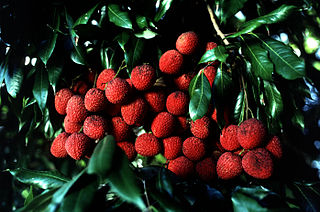
The Sapindaceae are a family of flowering plants in the order Sapindales known as the soapberry family. It contains 138 genera and 1,858 accepted species. Examples include horse chestnut, maples, ackee and lychee.
Honeyberry or honey berry is a common name for the edible fruits of several plants and may refer to:
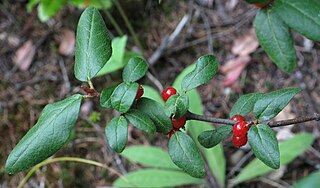
Shepherdia canadensis, commonly called Canada buffaloberry, russet buffaloberry, soopolallie, soapberry, or foamberry is one of a small number of shrubs of the genus Shepherdia that bears edible berries.
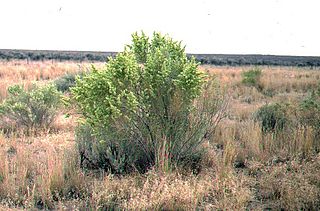
Saltbush is a vernacular plant name that most often refers to Atriplex, a genus of about 250 plants distributed worldwide from subtropical to subarctic regions. Atriplex species are native to Australia, North and South America, and Eurasia. Many Atriplex species are halophytes and are adapted to dry environments with salty soils.
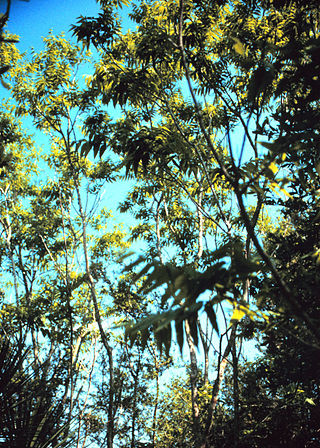
Sapindus is a genus of about thirteen species of shrubs and small trees in the lychee family, Sapindaceae and tribe Sapindeae. It is native to warm temperate to tropical regions of the world. The genus includes both deciduous and evergreen species. Members of the genus are commonly known as soapberries or soapnuts because the fruit pulp is used to make soap. The generic name is derived from the Latin words sapo, meaning "soap", and indicus, meaning "of India".

Indigenous ice cream, also known as sxusem, is a Canadian whipped confection made from soapberries and other various fruits; it has been eaten as a traditional dessert by many First Nations peoples. It has been suggested that it was first produced in the Interior Salish territory of British Columbia which was located in the upper basins of the Columbia and Fraser rivers, and included tribes such as the Columbia, Lillooet, and Shuswap among others.
Mahoe is a common name for several plants and may refer to:
Soapbush or soap bush can mean:
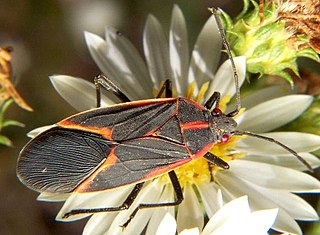
Serinethinae is a subfamily of the hemipteran family Rhopalidae, sometimes known as soapberry bugs. They are brightly colored seed-eaters, comprising three genera and about sixty-five species. These bugs are specialists on plants in the soapberry family (Sapindaceae), which includes maples, balloon vines, and soapberry trees, among others. Seeds of the plants are the main resource used by adults for reproduction and nymphs for growth and development. Their diversity is the result of an adaptive radiation on these plants, who have co-evolved defenses such as having their seeds contain cyanide, fly out, or be contained in hollow chambers.

Sapindus oahuensis is a species of tree in the soapberry family, Sapindaceae. It is endemic to Hawaii, where it is limited to Kauaʻi and Oʻahu. Its common names include Āulu, Oahu soapberry, alulu, kaulu, and lonomea.
Camphorweed is a common name for several plants and may refer to:

Cardiospermum is a genus of approximately 14 species in the soapberry family, Sapindaceae, which are native to the American, Indian, and African tropics. The genus name is derived from the Greek words καρδία, meaning "heart," and σπέρμα, meaning "seed." Common names of the members of this genus include balloon vine, love in a puff, heartseed, and heartseed vine. These plants are classified as invasive species in parts of the Southern United States and South Africa.
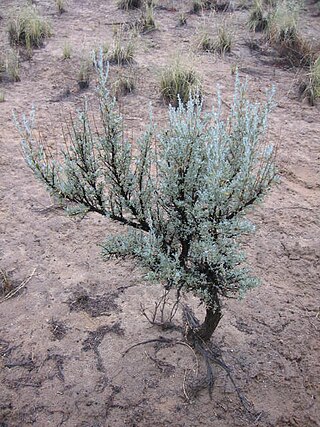
Sagebrush is the common name of several woody and herbaceous species of plants in the genus Artemisia. The best-known sagebrush is the shrub Artemisia tridentata. Sagebrushes are native to the West Coast of North America.
Soapweed or soap weed can refer to:

Sapindus saponaria is a small to medium-sized deciduous tree native to the Americas. Common names include wingleaf soapberry, western soapberry, jaboncillo, sulluku and manele and a'e (Hawaiian). Its genus name, "Sapindus", comes from the Latin, meaning Indian soap, and its specific epithet means "soapy."
Āulu is a Hawaiian name for several species of tree found in mesic forests:
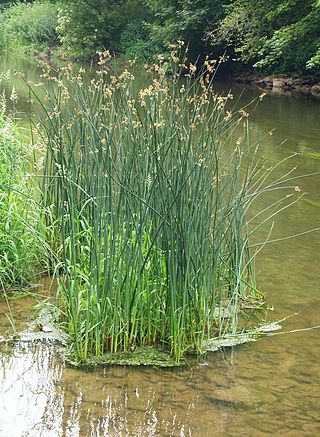
Bulrush is a vernacular name for several large wetland grass-like plants

There are numerous wild edible and medicinal plants in British Columbia that are used traditionally by First Nations peoples. These include seaweeds, rhizomes and shoots of flowering plants, berries, and fungi.
This page is based on this
Wikipedia article Text is available under the
CC BY-SA 4.0 license; additional terms may apply.
Images, videos and audio are available under their respective licenses.












